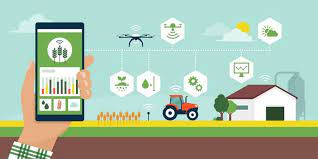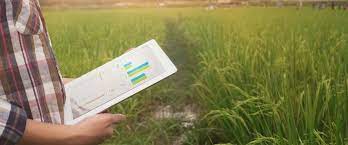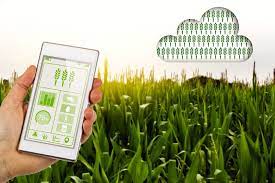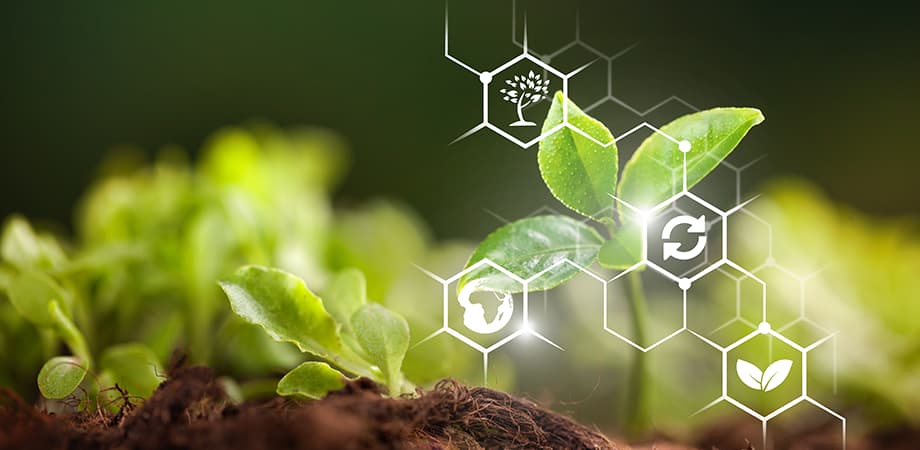Hello!
The word ‘data’ originates from the Latin word ‘datum’, which means ‘piece of information’. Fast forward to the late 2000s, you’ll realize that ever since then, everything that we create, consume and leave behind, in essence, is a ‘piece of information’. Whether it is liking a post, tweeting an article, or ordering a pizza, every digital action of ours is forever immortalized on a server, in some part of the world. Given all the craze around data and analytics, there isn’t a better time for someone to pick up these skills, and if you’re wondering where to start, you can learn Hadoop and Spark basics.
The Growing Popularity of Big Data
 With an ever-growing number of devices connected to the internet, especially after the Internet of Things revolution, the volume of data is growing at an exponential pace.
With an ever-growing number of devices connected to the internet, especially after the Internet of Things revolution, the volume of data is growing at an exponential pace.
On the other hand, raw computing power has seen a more linear growth. In a nutshell, the amount of data is so huge that traditional analysis tools don’t suffice anymore.
This is the reason tech companies are investing heavily in big data solutions using technologies like Hadoop. The underlying goal is simple – to make better decisions, enhance profits, and get detailed insights.
Let’s say a bank wants to target loan policies for the 30-45-year-olds’ bracket. To achieve this, a team of data scientists would use Machine Learning algorithms to find out which factors matter the most when it comes to applying for loans (e.g., age, salary, credit score, etc.).
But for this team to get valuable insights, it needs to be provided with an expansive dataset consisting of details of millions of potential customers. And, it is for the effective procurement and processing of such data at a large scale that Big Data tools are required and have been booming in the last five years.
Big Data Explained
 With the use case out of the way, let’s dive into the technicalities – what exactly is Big Data? One should start with a mathematical definition – how much data qualifies as ‘Big Data’? This definition, too, has evolved with time. In 1999, when the total volume of data was 1.5 Exabytes (1 Exabyte = 106 Terabytes), a 1 GB source could be considered as ‘Big Data’. But according to a prediction by PWC, by 2020 end, we have already reached 44 Zettabytes (1 Zettabyte = 109 Terabyte), and the term Big Data can be used for sources upwards of 1 Terabyte. To put it more loosely, data that is dynamic in nature and can’t be processed using relational databases can be classified as ‘Big Data’.
With the use case out of the way, let’s dive into the technicalities – what exactly is Big Data? One should start with a mathematical definition – how much data qualifies as ‘Big Data’? This definition, too, has evolved with time. In 1999, when the total volume of data was 1.5 Exabytes (1 Exabyte = 106 Terabytes), a 1 GB source could be considered as ‘Big Data’. But according to a prediction by PWC, by 2020 end, we have already reached 44 Zettabytes (1 Zettabyte = 109 Terabyte), and the term Big Data can be used for sources upwards of 1 Terabyte. To put it more loosely, data that is dynamic in nature and can’t be processed using relational databases can be classified as ‘Big Data’.
The data obtained from a source can be evaluated by these parameters, popularly known as the five V’s of Big Data:
1. Volume:
 The size of the data obtained from a source.
The size of the data obtained from a source.
2. Velocity:
The rate at which new data is generated by the source. Most systems churn out data in real-time, and the processing needs to be done instantaneously.
3. Variety:
Data can be of three types: Structured – Here, a predefined schema (tables of rows and columns) exists and all data points fit into the structure; Unstructured – Here, the native format of the data is retained during storage until processing, e.g., emails, images and sensor data; and Semi-structured – Data that is fundamentally unstructured, but contains metadata which makes processing and analysis easier than strictly unstructured sources.
4. Veracity:
It refers to the quality of the data obtained, whether it is riddled with inconsistencies or not.
5. Value:
 The most important V of all, it refers to whether the data that is available is substantial and, if at all, it can be used to extract insights from.
The most important V of all, it refers to whether the data that is available is substantial and, if at all, it can be used to extract insights from.
How is Big Data used in Agriculture?
One of the sectors, which stands to gain immensely from Big Data, is agriculture. Every aspect of agriculture, right from deciding which sapling to plant to determining the ideal time to reap crops, can be aided by Big Data using equipment such as soil sensors and GPS-enabled tractors. Here are some methods which have been proven to improve productivity:
1. Precision Agriculture:
Precision Agriculture (PA) or Site-specific Crop Management (SSCM) refers to a system of farming where tools like sensors, cameras, and geo-positioning enable a farmer to collect granular data about a farm and then decide upon which crop to sow. The soil sensors help farmers boost productivity and optimize their resources such as seeds and fertilizers. Although it is relatively new, a US-based company called John Deere has shown that it’s viable by fitting sensors and soil probes onto tractors.
2. Supply Chain Management:
 If every step in the transportation of the harvest is geo-tagged, it would improve transparency and reduce wastage. Analytics can also be used to find an optimal route from the farmland to the storage unit, thereby reducing the transportation overheads involved. A brilliant example of this would be IBM’s Food Trust, a blockchain-based ecosystem of producers, suppliers, manufacturers, retailers and consumers, where every customer can check the location and status of the fresh produce, along with details about where the sapling was planted, etc.
If every step in the transportation of the harvest is geo-tagged, it would improve transparency and reduce wastage. Analytics can also be used to find an optimal route from the farmland to the storage unit, thereby reducing the transportation overheads involved. A brilliant example of this would be IBM’s Food Trust, a blockchain-based ecosystem of producers, suppliers, manufacturers, retailers and consumers, where every customer can check the location and status of the fresh produce, along with details about where the sapling was planted, etc.
3. Minimize Losses Caused Due to Natural Calamities:
A rich system can predict, based on past data, the likely days for natural calamities such as storms or rainfall and even risk factors like crop diseases and pests. Such insights, if provided to a farmer at an appropriate time, can prove to be invaluable.
4. Better Crop Prediction:
 Traditionally, farmers, over a long period of time, try different crops to understand which one gives the best yield. But with advanced analytics based on soil data and local weather conditions, the best crop for the year can be predicted, which would be incredibly profitable for farmers.
Traditionally, farmers, over a long period of time, try different crops to understand which one gives the best yield. But with advanced analytics based on soil data and local weather conditions, the best crop for the year can be predicted, which would be incredibly profitable for farmers.
5. Investment in Agriculture:
Once data-driven farming becomes the norm, big companies will invest heavily into agri-tech and compete to build the most affordable and convenient solution, benefitting the farmers and, by association, the retailers and consumers.
To conclude, we can say that Big Data is here to stay; and agriculture as an industry will greatly benefit from the progress made in Big Data Analytics. Hence, if you learn Hadoop and Spark basics, you can make a mark in Big Data in the agricultural sector too.
Also read:
- An Explanation of Identity and Access Management
- How Internet Marketing is a Game Changer for Businesses Post COVID-19?
- 4 Best Practices For Issue Tracking
Thank you!
Join us on social media!
See you!






